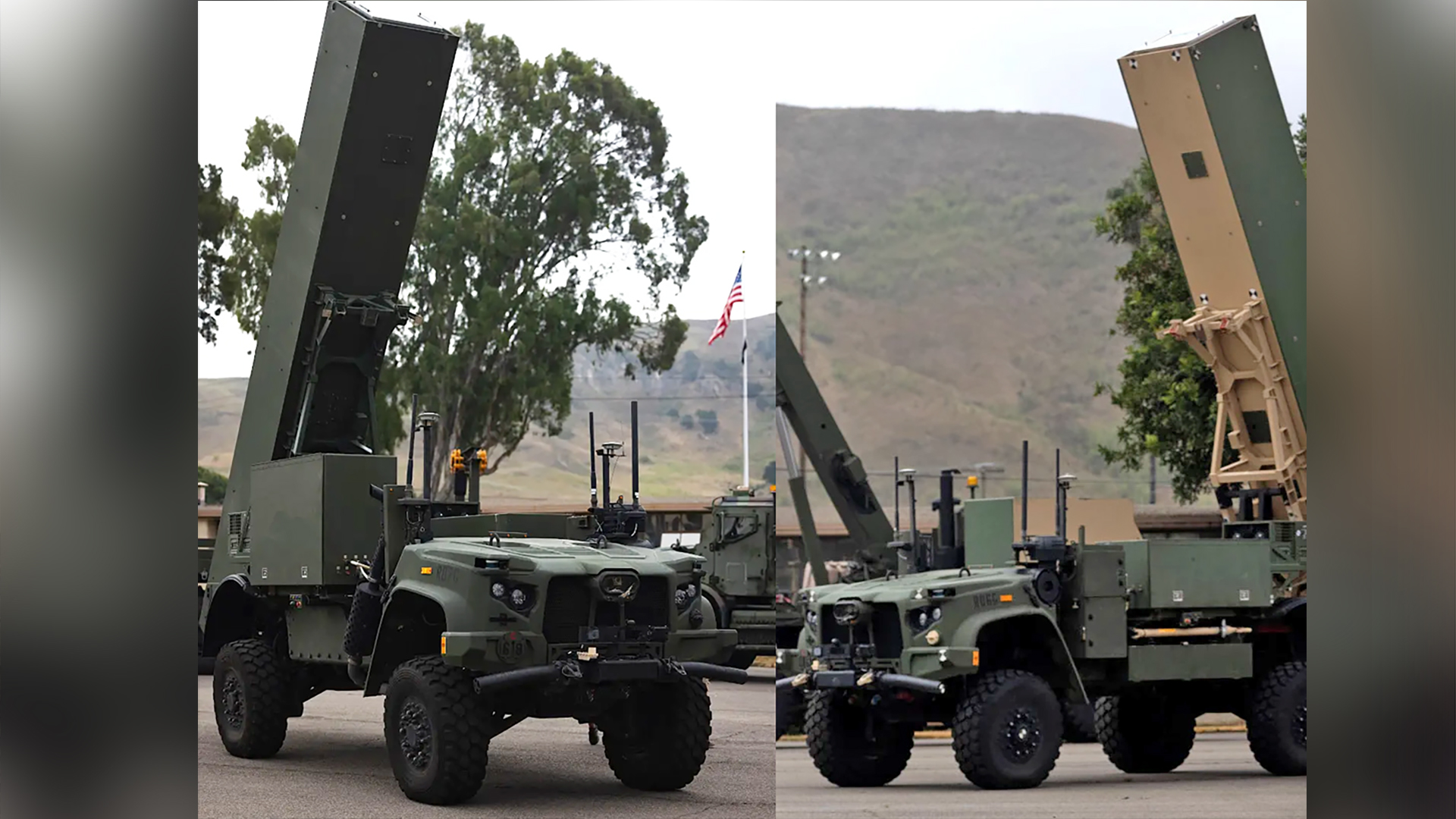The U.S. Marine Corps has finally given us a look at the uncrewed 4×4 launch vehicle at the core of its new ground-based Tomahawk cruise missile unit. Dubbed the Long Range Fires Launcher, it is similar, but not identical to the Joint Light Tactical Vehicle-based design that the service is also fielding as a launch platform for Naval Strike Missile anti-ship missiles.
Two Long Range Fires Launchers were part of the backdrop for an official ceremony to mark the standing up of Battery A, 11th Marines at Camp Pendleton in California on July 21. The Marines released photos from that event today. Battery A, the service’s first Long Range Missile (LMSL) battery, had already been formally activated earlier this year, as The War Zone was the first to report last month. The Corps hopes to have a multi-battery LMSL battalion with an unspecified number of launchers fully operational by 2030.
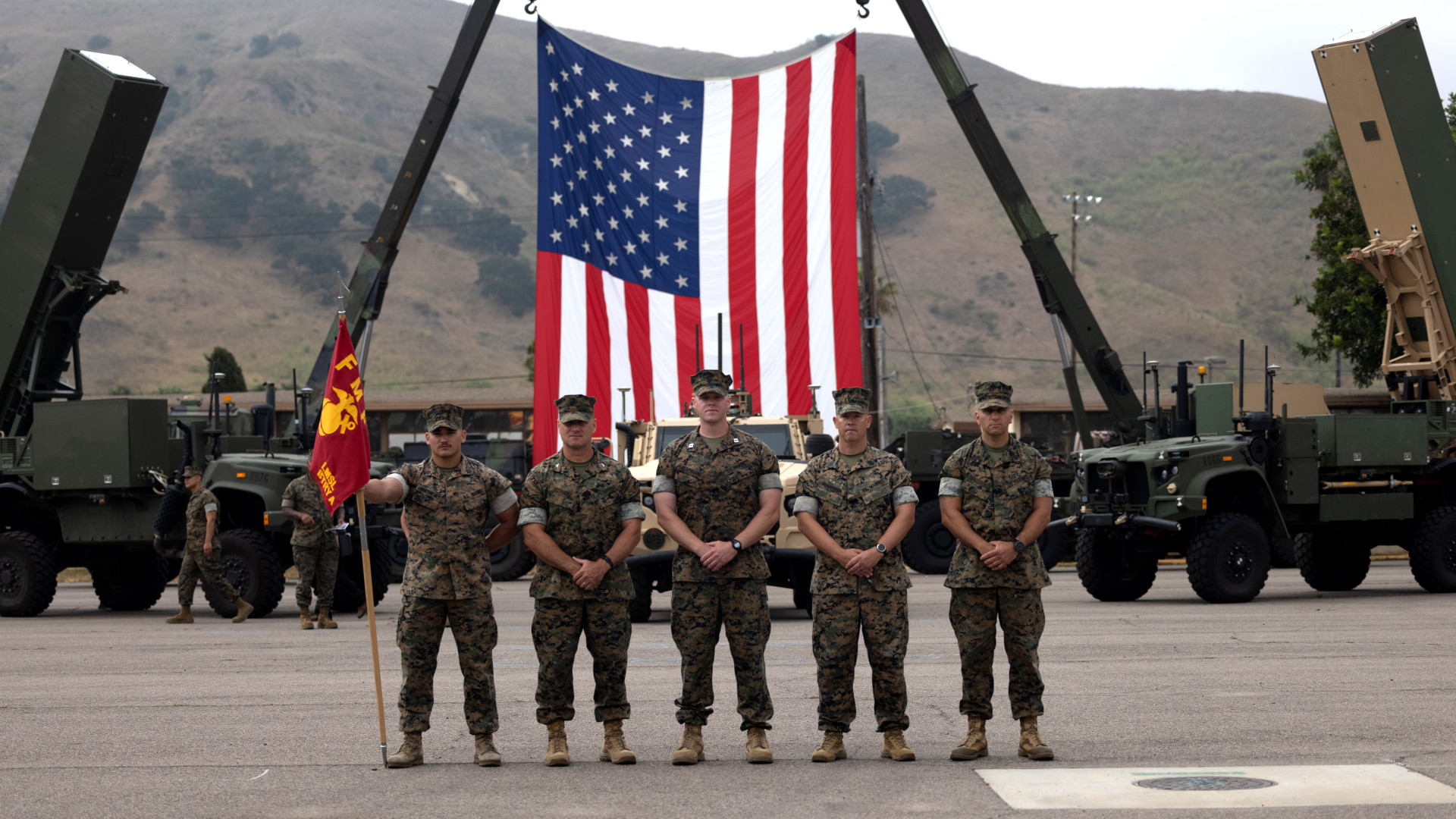
The Long Range Fires Launcher is immediately distinguishable from the earlier design derived from the Joint Light Tactical Vehicle (JLTV) that is configured to fire the Naval Strike Missile (NSM), which is also called the Navy Marine Expeditionary Ship Interdiction System (NMESIS). The Long Range Fires Launcher appears to only be able to be loaded with one Tomahawk at a time, unlike the two ready-to-fire NSMs that NMESIS can carry at once.
The Long Range Fires Launcher also has distinctive ‘boxes’ on either side of the center of the chassis, which are not found on the NMESIS. The purpose of these is not immediately clear, but they could contain a host of Tomahawk-specific systems, including fire control hardware.
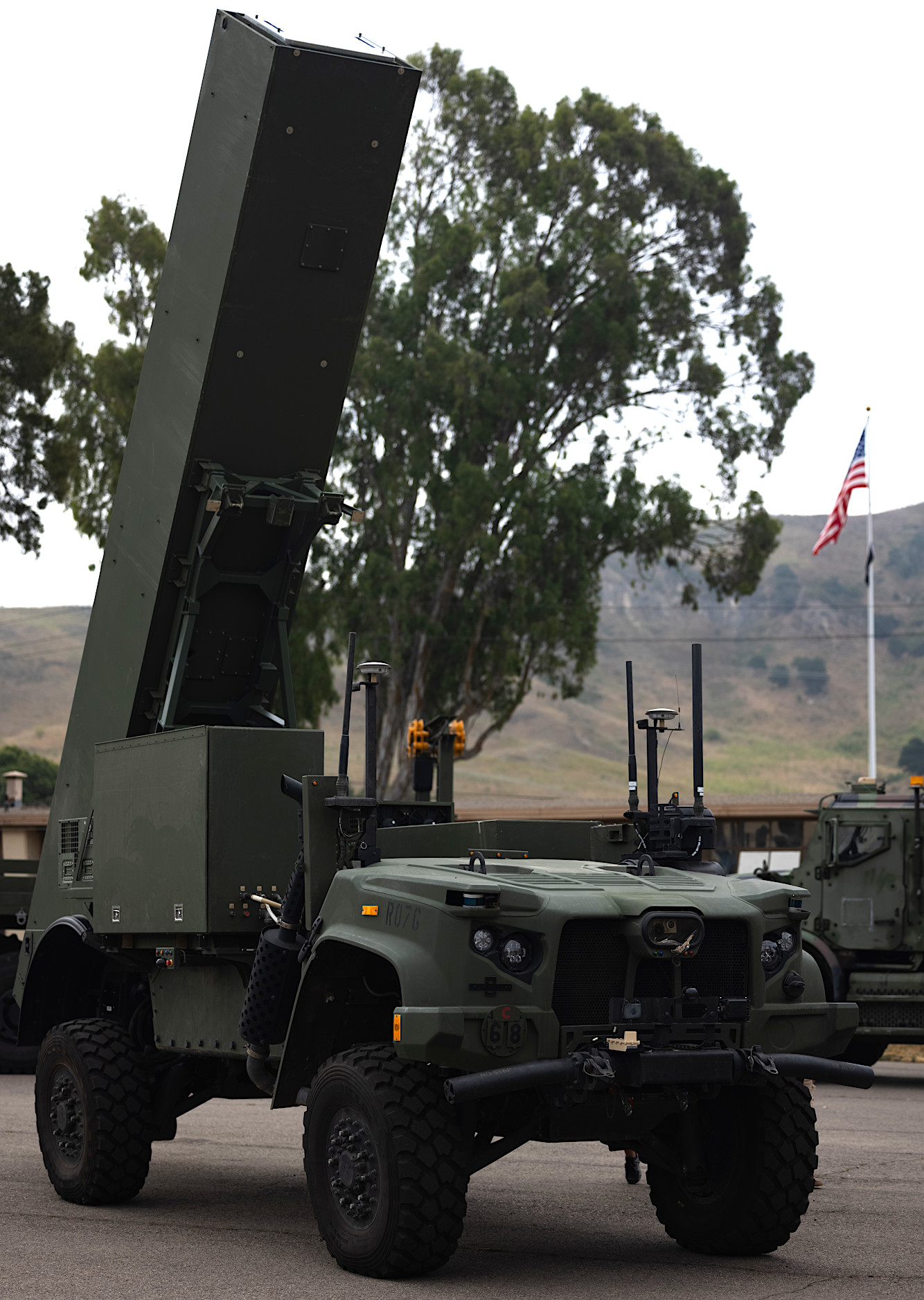

Both the Long Range Fires Launcher and NMESIS clearly utilize variants of the Remotely Operated Ground Unit for Expeditionary-Fires (ROGUE-Fires) vehicle. This is an uncrewed derivative of the 4×4 JLTV that is operated remotely by personnel on the ground.
The pictures of the Long Range Fires Launcher do answer a number of outstanding questions about how this vehicle might be configured. Tomahawk is significantly longer than NSM. The Tomahawk missile canister on the Long Range Fires Launcher looks to be long enough that it will hang off the back of the vehicle, and possibly the front, when it is in its stowed-for-travel position. As seen below, this is not the case with NMESIS.
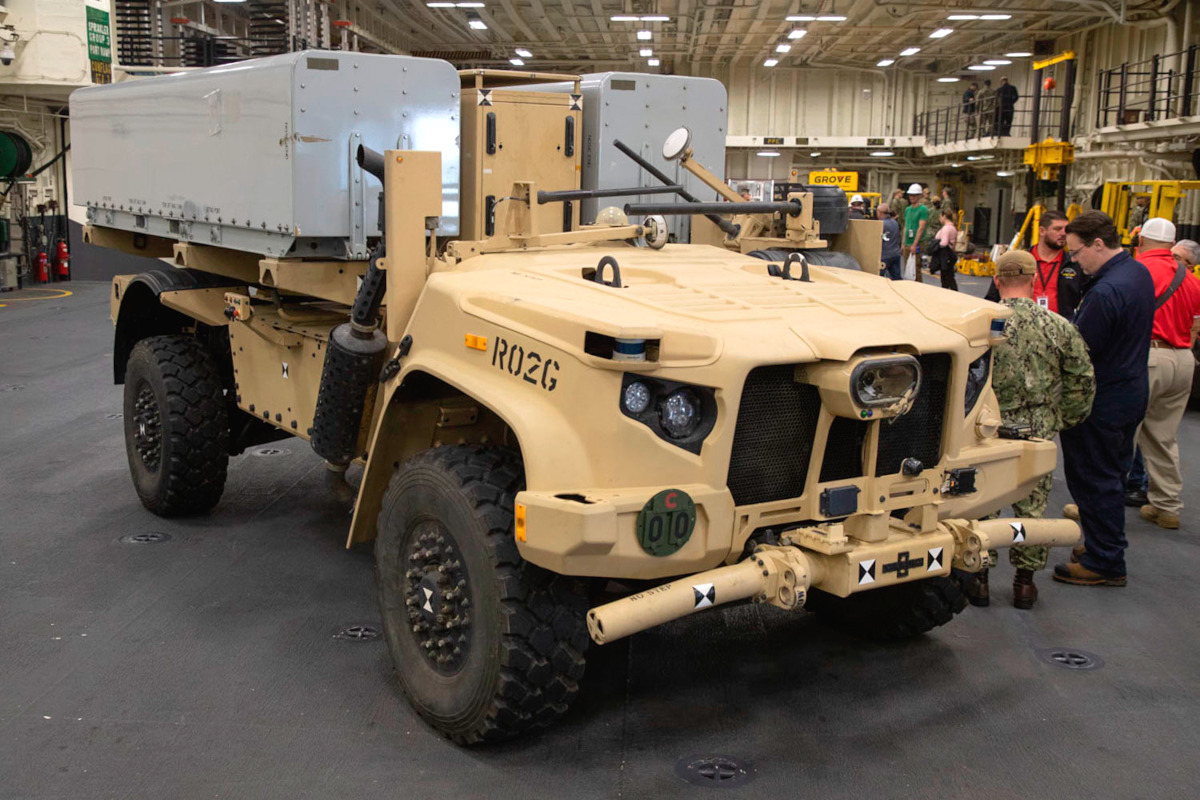
A single canister positioned along the centerline of the chassis could also help give the vehicle a better center of gravity, which was apparently an issue in testing. “The proof-of-concept [Tomahawk] system… already had a tip-over incident due to the center of gravity being off,” Defense News reported in June.
Other details about the Long Range Fires Launcher, as well as its cousin the NMESIS, remain limited.
It is also worth noting that the Long Range Fires Launcher is substantially smaller than the tractor-trailer and containerized weapon systems the U.S. Army and Navy are fielding, respectively, to launch Tomahawk and other missiles. The Army’s system is called Typhon, while the Navy’s one is called the Mk 70 Expeditionary Launcher. The Marine Corps’ uncrewed launcher vehicle should be more readily transportable as a result, including by air.
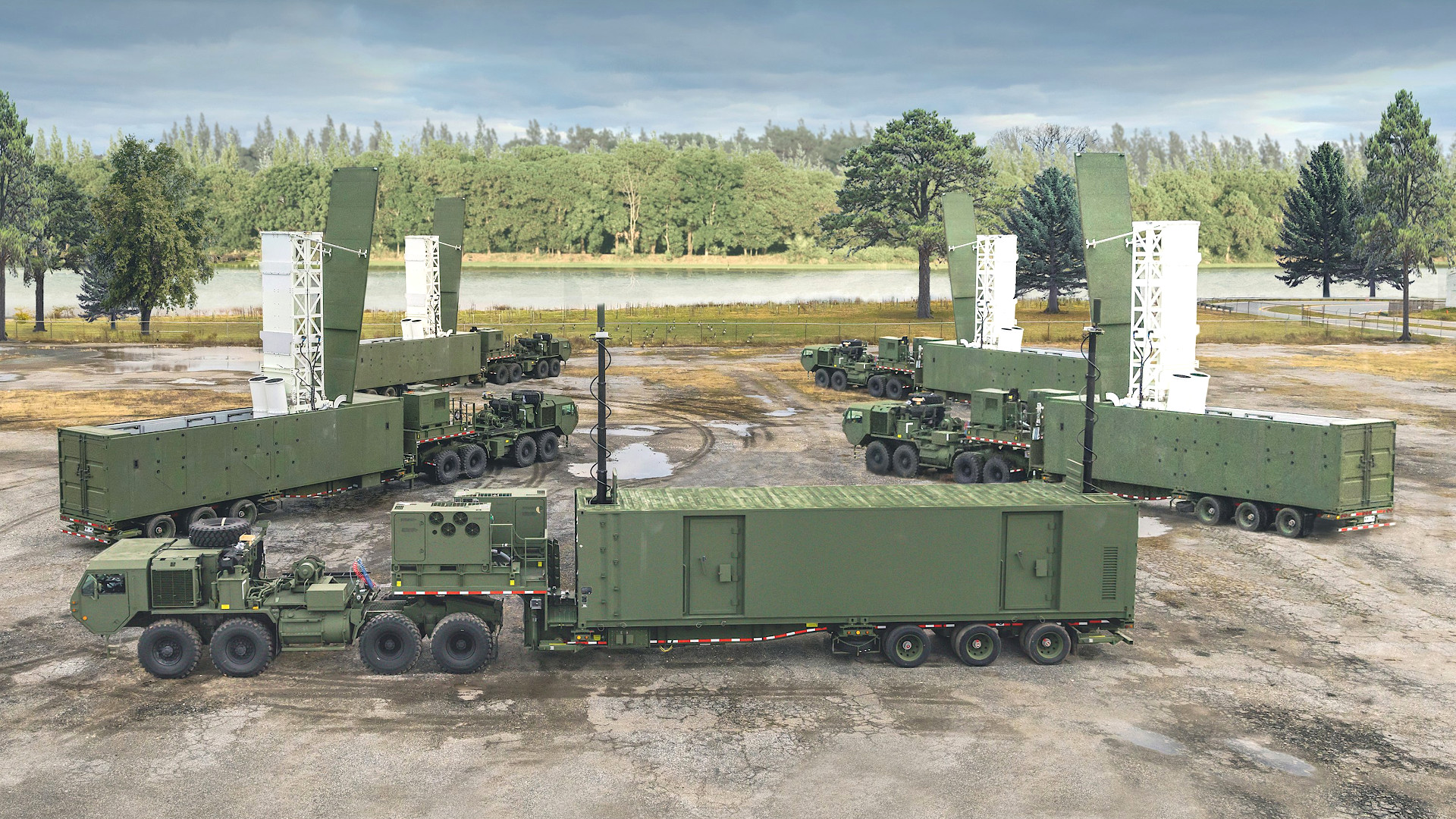

“The battery will train with long-range fires launchers, designed to fire Tomahawk cruise missiles, and various supporting assets to further refine the structure and requirements necessary for successful employment of the system,” according to the Marine Corps. “The battery’s Marines, along with 11th Marines’ leadership, will continue to refine tactics, techniques, and procedures to employ the long-range fires system in support [of] 1st MARDIV [Marine Division] and I Marine Expeditionary Force [MEF] initiatives.”
Ostensibly, the Long Range Fires Launcher and the Marine Corps’ new LMSL batteries are part of “broader ground-based anti-ship missile development[s] for the service.” The indication has long been that the primary weapon for the LMSL units will be the anti-ship optimized Maritime Strike Tomahawk (MST).

This is part of the larger sea denial component of the Marine Corps’ new expeditionary and distributed concepts of operations, which are still in the process of being refined. One major focus of those concepts is on the ability to relatively rapidly deploy Marine units to remote or austere locations where they can establish bases to hold large surrounding areas, including maritime environments, and enemy forces within them at risk. Those contingents are then expected to be just as capable of deploying to other sites, reducing their vulnerability to counter-attack and otherwise complicating an opponent’s decision-making and targeting cycles.
New stand-off strike weapons like the Long Range Fires Launchers loaded with Tomahawks and NSM-armed NMESISs are key components of the Marine Corps’ vision for how it will conduct operations in the future. Island-hopping scenarios, such as ones that Marines might encounter during a future high-end conflict in the Pacific against China, have been a major factor in this planning, as well.
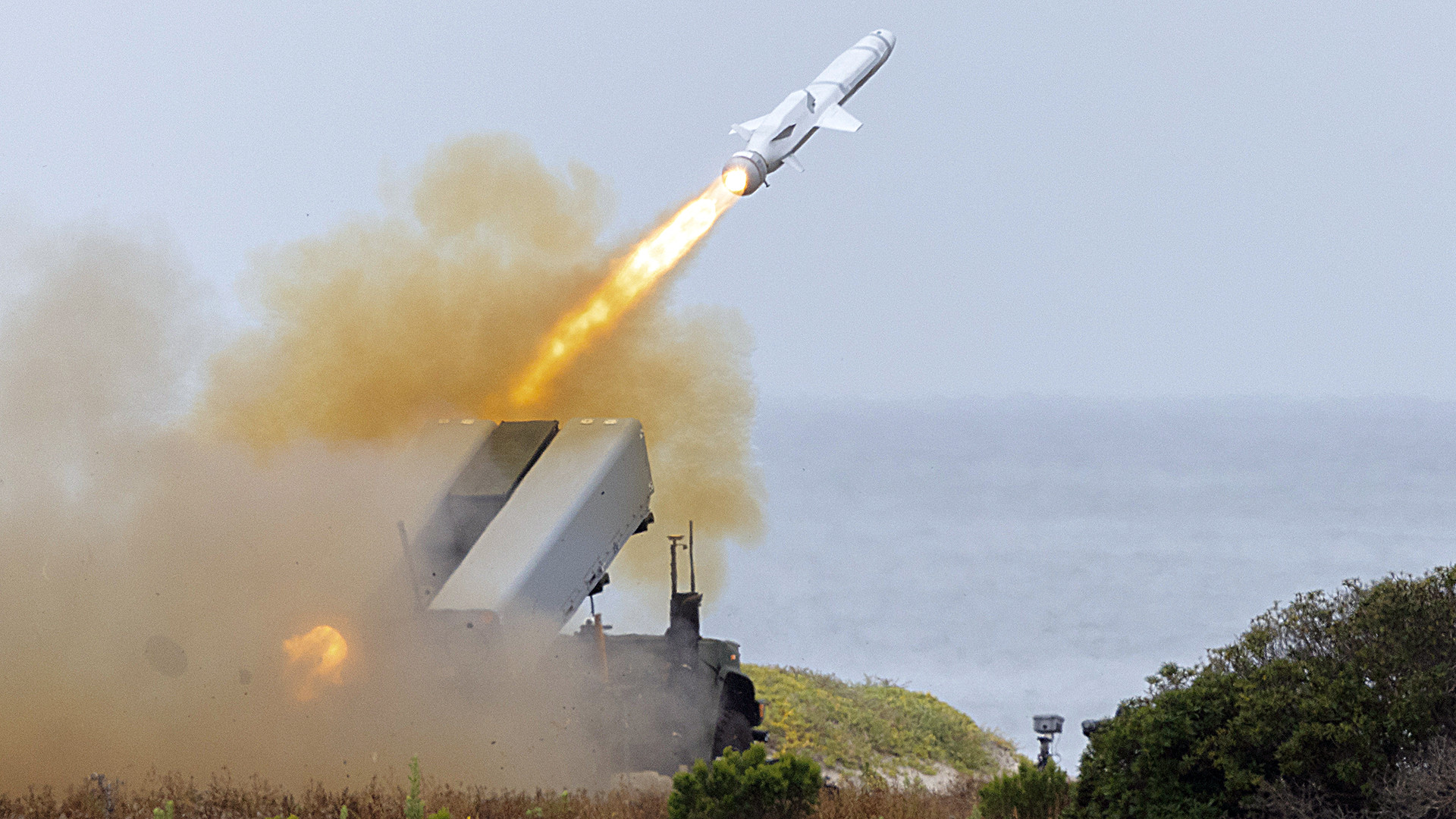
Of course, the anti-ship focus notwithstanding, the Long Range Fires Launchers should be able to fire any variant of the Tomahawk, and MSTs will retain a land-attack capability. As such, units with these launch vehicles should be able to engage targets at sea and ashore anywhere within a bubble extending roughly 1,000 miles or more out in all directions from where they are deployed. That’s an area encompassing more than three million square miles. If the Marine Corps’ JLTV-based launchers can be relatively quickly deployed and redeployed within forward areas, this would help extend their reach and general flexibility.
The Marine Corps’ Long Range Fires Launcher, along with NMESIS, are also just part of a growing joint service long-range land-based strike ecosystem. This includes the Army’s Typhon and the Navy’s Mk 70, which can fire multi-purpose SM-6 missiles, capable of engaging aerial threats and targets down below, along with Tomahawks. This is all being driven by a U.S. military-wide desire for additional capacity to conduct long-range strikes against targets on land, at sea, and in the air, with a particular eye toward the need for those capabilities in any future conflict with China.
“I imagine someone pretty high up said, ‘We’ve seen what Marines can do with rifles, let’s see what Marines can do with Tomahawks,'” Marine Corps Col. Patrick Eldridge, the commanding officer of 11th Marines, said at Battery A’s activation ceremony.
Now that the Marines have revealed the Long Range Fires Launcher to the public, as well as stood up the first unit to be equipped with them, we may well start to learn more about what Battery A is capable of in more detail.
Contact the author: joe@thedrive.com
